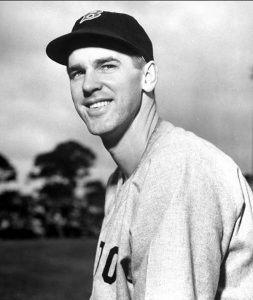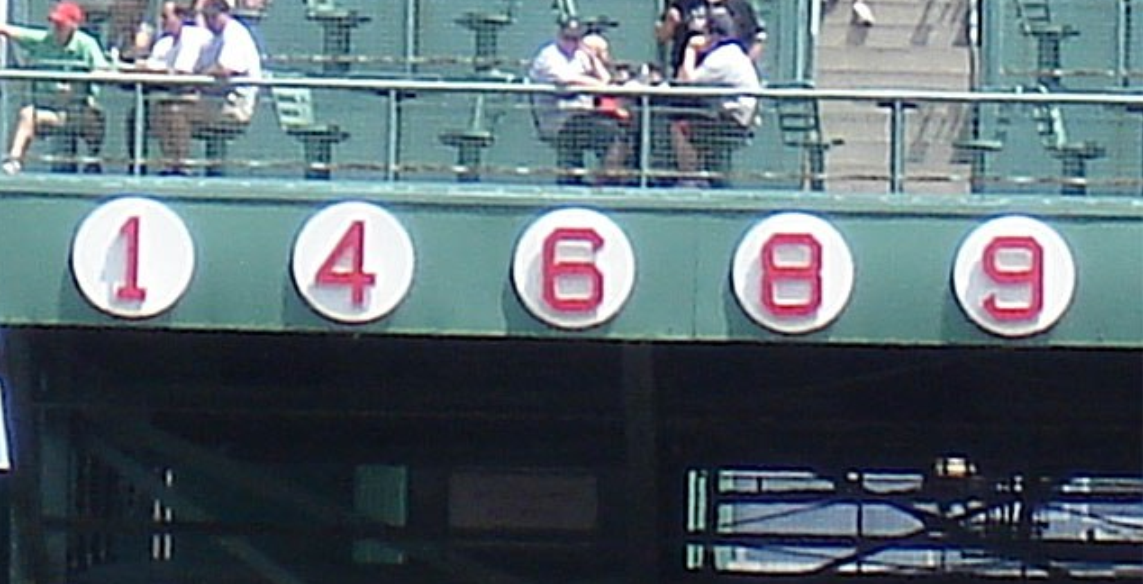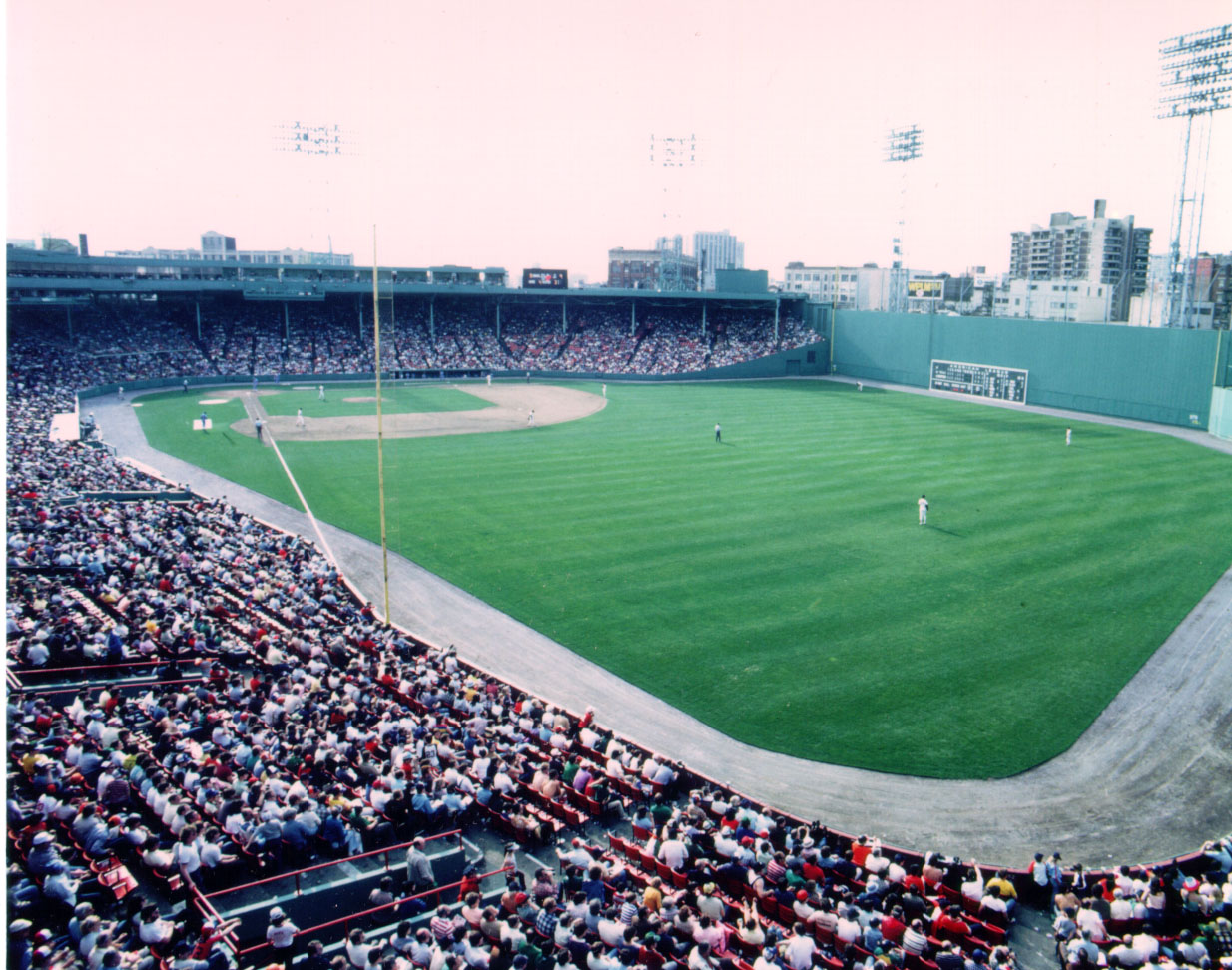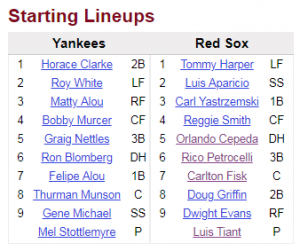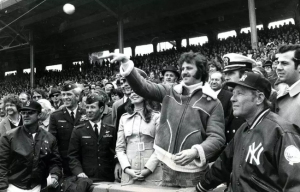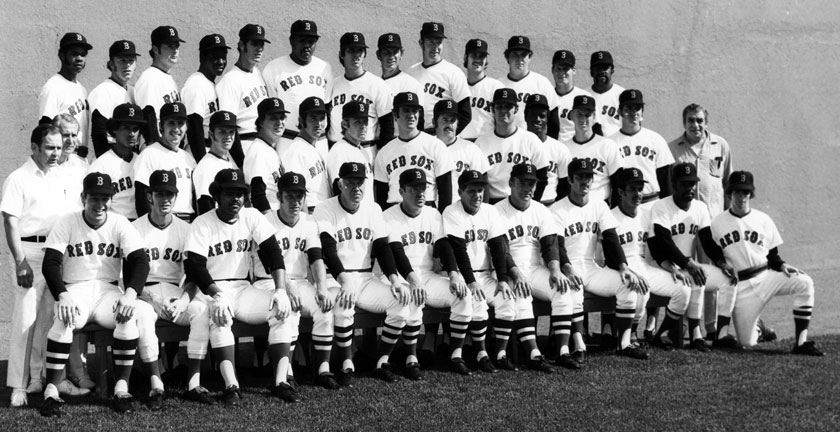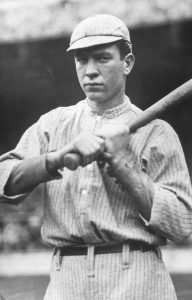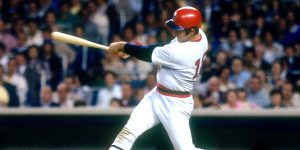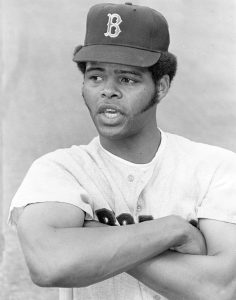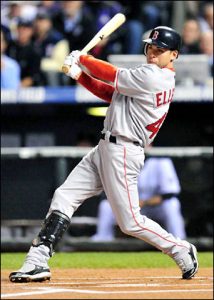Writing about the best players to don uniform numbers six through ten for the Red Sox. This is the second article in this series. If you missed the numbers one through five, check it out here. This set of numbers, six to ten, features three numbers retired by the franchise.
Number 6 – Johnny Pesky
Pesky was nearly a Red Sox lifer, spending parts of eight seasons with the team during his ten-year Major League career. He then did some announcing for the team, coached and hung around the team throughout his life. As recently as 2012, when Fenway Park celebrated its 100th anniversary, Pesky was wheeled out onto the field to partake in the ceremony.
Pesky is underrated as a player. I feel like a lot of Sox fans know him for Pesky Pole and hanging around the team forever, but might not be sure about how good a player he was. Nationally he was very underrated as well. If not for spending three years fighting in World War II, Pesky may have been a Hall of Fame player. In his rookie season of 1942, Pesky set a rookie record with 205 base hits, which led the league. He batted .331 that season.
After missing three years of baseball, Pesky returned from war to belt over 200 base hits each of the next two seasons, again leading the league both years. He batted .335 and .324 in those seasons. His first three years in the MLB he led the league in base hits all three. If Pesky had reached 200 hits in all three seasons he missed, not a stretch given what he accomplished surrounding those years, he would have gone over 200 hits in six straight years to begin his career. This also would have given him over 2000 hits and easily a .300 average while playing mostly shortstop, a premium position.
Pesky had his number six retired by the Red Sox in 2008, after spending decades with the franchise in some sort of role.
Honorable Mentions: Rico Petrocelli, Harry Agganis
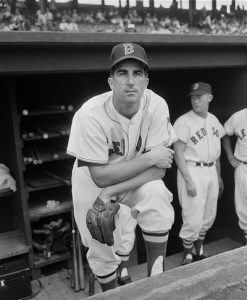 Number 7 – Dom DiMaggio
Number 7 – Dom DiMaggio
Another of the group of friends from the forties teams, DiMaggio was also underrated as a player. Ted Williams repeatedly went to bat for DiMaggio to make the Hall of Fame before his death. He was a fantastic fielder in center and was the table setter at the top of the lineup for some very good offenses. Unfortunately, Dom was overshadowed by both his older brother Joe and sharing an outfield with Ted.
Most people nationwide would know Dom DiMaggio as Joe’s little brother. Dom DiMaggio, however, made seven all-star teams, and likely would have received a nice collection of Gold Gloves for his work in center field had the award existed back then. He got great reads, had a lot of range and one of the strongest arms in the league. In addition, DiMaggio batted .298 for his career with a stellar .383 on-base percentage. He averaged 195 base hits per 162 games with 87 walks.
Ted Williams knew what he was talking about when it came to baseball, so who’s to argue with him over DiMaggio? Dominic certainly has a case for the Hall. He also missed three years of playing time due to fighting in World War II, hurting his cumulative statistics.
Honorable Mentions: Reggie Smith, Trot Nixon, JD Drew, Rick Burleson, Dick Stuart
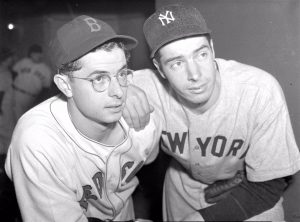
Despite being an excellent ballplayer himself, Dom DiMaggio was always in the shadow of his older brother Joe. (AP Photo/file)
Number 8 – Carl Yastrzemski
Yaz is, of course, the recipient of the greatest ballplayer to wear the number eight for the Red Sox. Can you name anyone else who wore the number for the team? Number eight is synonymous with Yaz around here.
Everyone knows about Carl Yastrzemski, so here are some quick hits. Yaz made 18 All-Star Games and won an All-Star Game MVP. Yaz was a fantastic fielder, leading to seven Gold Glove Awards. He won the triple crown in 1967 and was named the American League MVP that season. Yaz won three batting titles and led the league in on-base percentage five times, slugging percentage three times and OPS four times. He also led the league in hits twice, walks twice, runs scored three times, doubles three times, and home runs and runs batted in once apiece.
For Red Sox records, Yastrzemski is number one in franchise history in games played, at-bats, hits, total bases, runs scored, runs batted in and doubles, in addition to a few others. The man who played 23 seasons and got on base 5304 times is all over the franchise record books.
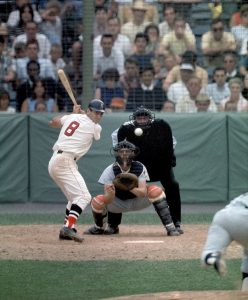 Number 9 – Ted Williams
Number 9 – Ted Williams
Again, who doesn’t know Ted Williams, the greatest hitter who ever lived? The retired number nine is Ted Williams, and Ted Williams alone. There’s not much to say that isn’t known about the man who made 19 All-Star Games and missed three years to fight in World War II and two more for the Korean War. Without those military stints, Williams may have threatened Babe Ruth’s all-time home run mark of 714 at the time. Williams won two Triple Crowns and two MVPs and was robbed of at least three other MVP Awards by vengeful sports writers.
Williams led the league in hitting six times, including back-to-back years at the ages of 38 and 39. His .388 batting average in 1957 at the age of 38 is one of, if not his finest accomplishment, up there with batting .406 in 1941. He only had an OPS under 1.000 once, his 40-year-old season when he played injured. He came back the next year to have his best HR/AB ratio of his entire career.
People once wondered if Ted Williams would still be able to hit after returning from a second stint at war. He had nearly died in the Korean War and was coming back at nearly 35 years old. In addition to this, he had not swung a bat in 16 months while flying fighter jets. All he did was bat over .400 and swatted 13 home runs in 91 at-bats over the rest of the 1953 season. From his return from Korea through the 1958 season, ages 35 to 39, Williams batted an unheard of .355/.496/.661/1.157! These are just several stats about the greatest hitter of all-time, I could go on for hours about what he accomplished just at the plate.
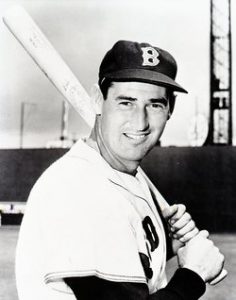 Number 10 – Billy Goodman
Number 10 – Billy Goodman
The least well known of the group for numbers 1-10, Goodman was a good player for the Sox. He spent a decade with the team from the late forties through the mid-fifties. Goodman played all over the field but was mostly a first and second baseman. He batted .310 as a rookie in 1948, then made the all-star team in year two. By year three, Goodman led the league in hitting with a .354 batting average, finishing second in the MVP vote.
During his nine full seasons with the Red Sox, Goodman batted above .300 five times. The other four seasons he was in the .290’s. He was a .306 hitter with the team and posted an excellent .386 on-base percentage. His versatility only added to his value on the field. Goodman made two All-Star Games and garnered MVP votes in six different seasons with the Red Sox.
Honorable Mentions: Rich Gedman, Bob Montgomery, Scott Hatteberg
